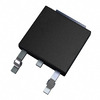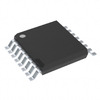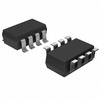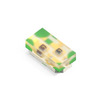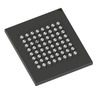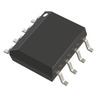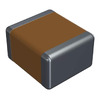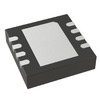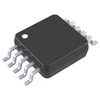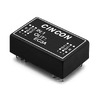Throttle Position Sensor Guide - How it Works, Types, Common Problems, and Treatment
The Throttle Position Sensor (TPS) is a crucial component of the engine management system in modern vehicles. When an electrical component within the fuel injection system malfunctions, you might think of poor engine performance, but it could also be an issue with the Throttle Position Sensor (TPS). If the sensor's issue remains unresolved, your engine will be affected, gradually fail, and might even stop working altogether. However, symptoms of a faulty TPS often resemble those of other failing electronic components, and not many people know how to diagnose the problem.
This article aims to delve into the Throttle Position Sensor—exploring its operating mechanism, revealing common faults, and guiding you on how to skillfully resolve these issues.
Table of Contents
- What is a Throttle Position Sensor?
- Working Principle of the Throttle Position Sensor
- Common Issues and Causes with Throttle Position Sensors
- Troubleshooting a Faulty Throttle Position Sensor
- How to Deal with a Faulty Sensor
What is a Throttle Position Sensor?

Throttle position sensor
The Throttle Position Sensor (TPS) is an electronic component in the vehicle's fuel management system, tasked with controlling the airflow to the engine.
It is typically mounted on the throttle body, directly monitoring the throttle position and signaling the fuel injection system to ensure the correct mixture of air and fuel is delivered to the engine.
If the TPS malfunctions, a series of troublesome symptoms can follow, affecting the vehicle's performance. You might encounter ignition timing errors, abnormal fuel consumption, and unstable engine running at idle, among other issues. These symptoms not only affect the driving experience but could also lead to more serious engine damage.
Types and Working Principles of Throttle Position Sensors
There are mainly two types of Throttle Position Sensors: potentiometer-based sensors and Hall effect-based sensors.
Potentiometer-based TPS: First, the potentiometer-based sensor operates with a variable resistor connected to the throttle shaft. As the driver accelerates, the rotation of the throttle shaft changes the resistance value between the ends of the potentiometer, thereby generating a varying voltage signal. This signal is then interpreted by the Engine Control Unit (ECU) to precisely determine the throttle opening, allowing for fine adjustments to the fuel injection system and ensuring a precise match between car power output and throttle input.
Hall effect-based TPS: The other type is the Hall effect-based sensor, which uses a magnetic field to capture changes in throttle position. Specifically, a small magnet is mounted on the throttle shaft. As the driver operates the throttle, the magnet rotates with the shaft, passing by the Hall effect sensor, generating a voltage signal that is also captured and analyzed by the ECU for fuel adjustment.
While both types of TPS function similarly in detecting and feeding back throttle position information to optimize fuel injection, they differ significantly in technical implementation. Potentiometer-based TPS, due to its simpler structure and lower cost, is widely adopted. Meanwhile, Hall effect-based TPS, offering more accurate data and better durability, is often used in high-performance applications.
Common Issues and Causes with Throttle Position Sensors

Throttle position sensor mounting position
Before delving into how to identify a faulty throttle position sensor, it's important to clarify the core role of the TPS: it's responsible for monitoring the throttle's openness, which directly impacts ignition timing, fuel consumption rates, engine power, and overall vehicle performance. Key data from the sensor is relayed to the engine's Electronic Control Unit (ECU), based on which, the car's electronics adjust fuel supply and ignition timing to achieve the optimal fuel-air mixture.
When a TPS malfunctions, drivers may encounter a range of issues, including but not limited to:
- - Fluctuating idle speed, instability;
- - Engine unexpectedly stalling when shifting or switching to neutral;
- - Engine stops running at idle;
- - Sudden loss of power while driving or accelerating, resulting in uneven driving;
- - Decreased engine power, leading to slow acceleration, especially noticeable when climbing or carrying heavy loads, like towing a trailer;
- - Check engine light illuminating on the dashboard, often signaling that an error code, such as P0120, suggesting a TPS issue, has been recognized by the scan tool;
- - In some cases, abnormal increase in fuel consumption.
It's crucial, though, that while these issues may indicate a faulty throttle position sensor, ensuring the TPS itself is in good condition is the first step in diagnosis.
TPS typically comes in two types: contact (film resistor type) and non-contact (magneto resistive type), with contact sensors being more prone to failure. Failures often result from mechanical wear caused by the movement of the slider across the resistor track, leading to erroneous data being sent to the Electronic Control Unit.
Faults in the film resistor type TPS may include:
- - Damaged or worn slider contact points, leading to failure of the resistor layer and electrical contact interruptions;
- - Sensor output voltage not increasing, possibly due to wear on the base coating of the slider movement area;
- - Wear of the slider drive gear;
- - Breakage of the sensor's power or signal wires;
- - Short circuit in the DPRS circuit or signal circuit;
- - Lack of graphite layer deposition in the magneto resistive mechanism, leading to wire breakage or short circuit.
Whether contact or non-contact type, the key during diagnosis is to ensure the TPS mechanism can accurately perform its function to maintain optimal engine operation.
Troubleshooting a Faulty Throttle Position Sensor
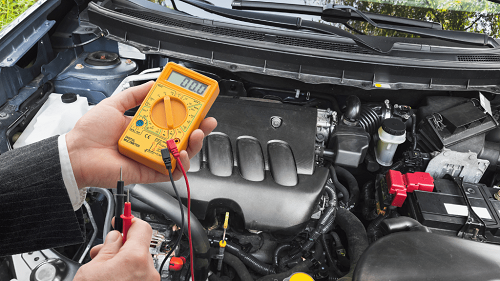
Troubleshooting a Faulty Throttle Position Sensor
Facing a suspected faulty Throttle Position Sensor (TPS) doesn't have to leave you feeling helpless. In fact, through a series of carefully designed diagnostic steps, you can effectively identify and resolve the issue.
Check Wiring: First, check that the connections between the TPS and the Electronic Control Unit (ECU) are securely in place, without corrosion or any form of damage.
Test Voltage Output: Next, use a multimeter to measure if the TPS's voltage output rises smoothly as the throttle opens, as expected.
Inspect the Sensor: Then, conduct a thorough inspection of the sensor itself for any physical damage or signs of wear. If the sensor is indeed damaged, replacing it becomes the inevitable choice.
Clean the Throttle Body: Don't overlook cleaning the throttle body, as accumulated dirt could cause instability in the TPS signal; a simple cleaning job can sometimes significantly improve the situation.
Replace TPS: Ultimately, if none of the above attempts resolve the issue, replacing the TPS might be the last resort. At this step, it's strongly recommended to choose a reputable supplier and ensure the replacement part is of high quality to restore vehicle performance back on track.
How to Deal with a Faulty Sensor
Replacing the Old Mechanism with a New One
Precise diagnostics have revealed a defect in the DPDD. In this case, it becomes necessary to replace the sensor with a brand new one, requiring the most basic specialized tools, a Phillips screwdriver, and a bit of patience.
First, turning off the power and resetting the battery terminals are prerequisites for replacing the sensor. Then, you need to disconnect the sensor connector, which is equipped with a unique locking mechanism. Next, loosen the two screws fastening the sensor to the throttle body assembly to smoothly remove the old mechanism, paving the way for the new one. During this process, ensuring the throttle is in the closed position is crucial.
When purchasing a new sensor, don't forget the O-ring, which plays a role between the DPRS and the throttle tube. Before installing the new mechanism, ensure
the old sealing ring is removed. When securing the TPS with mounting screws, it's vital to press the O-ring adequately. Then, reconnect the connector and secure it with the lock. Disconnecting the battery power for 3 to 5 minutes to clear any old error codes possibly remaining in the car's electronic control system is an indispensable step in most cases.
Adjusting the TPS if it Malfunctions or Operates Improperly
Timely adjustment of the TPS mechanism may eliminate the need for replacement when signs of malfunction appear, making adjustment particularly important.
Removing the sensor connector or slightly exposing the wires under the cover, you'll find that only two wires are crucial: blue (positive) and black (ground). During the adjustment process, these two wires are essential for determining the voltage. Once the connector is removed, connect the multimeter probes to the corresponding points on the sensor. After completing this step, ensure the wires are securely connected to the sensor, then reinstall the mechanism. The installation screws need not be overly tightened but ensure the sensor is firmly in place, which can be tested by gently shaking it.
Next, gently rotate the sensor, clockwise or counterclockwise, until the device shows a reading of 0.55 to 0.56 volts. If necessary, enlarge the installation holes to increase the rotation angle. After setting the desired parameters, firmly lock the TPS. Then, perform voltage control measurements, insulating the exposed parts of the wires if necessary.
FAQ
What are the symptoms of a faulty throttle position sensor?
- An unexplainable bucking and jerking in the vehicle.
- Sudden idle surges.
- Sudden engine stalling without any apparent reason.
- Hesitation while accelerating.
- Sudden surges in speed while driving on the highway.
- Intermittently flashing of check engine light for no apparent reason.
Can I drive with a bad throttle position sensor?
You should be anxious about it every second you drive, but it should be fine to drive 50 miles if that's how far the nearest shop is. The problem with having a bad throttle position sensor is that the amount of air going into the engine is not able to be accommodated for in the fuel mixture right away.
Can a car run without a throttle position sensor?
Old cars like mine use a steel cable that connects the gas pedal to the throttle body, so a sensor wouldn't be necessary for driving. But on a newer car, if the sensor is needed for proper acceleration, you won't accelerate without it. But the engine should still turn over fine.
About us
ALLELCO LIMITED
Read more
Quick inquiry
Please send an inquiry, we will respond immediately.
→ Previous

Cables are one of the key elements of network infrastructure, referring to wires or bundles of cables that transmit electrical power or data signals from one location to another, facilitating signal transmission between devices. There are mainly two types of cables used for network connections: stra...

In today's society, the watch has gone far beyond its original function of timekeeping, evolving into a symbol of fashion taste and personal style. Behind this change is the relentless pursuit of tiny and precise components inside the watch, especially those reliable power sources that ensure stable...
→ Next

Crossover vs. straight-through cable selection guide - differences, wiring styles, how to choose
on March 12th

Comprehensive Guide to SR626SW Batteries: Benefits, Specifications, Differences from LR626 Batteries
on March 2th
Popular Posts
-

What is GND in the circuit?
on January 1th 3272
-

RJ-45 Connector Guide: RJ-45 Connector Color Codes, Wiring Schemes, R-J45 Applications, RJ-45 Datasheets
on January 1th 2815
-

Understanding Power Supply Voltages in Electronics VCC, VDD, VEE, VSS, and GND
on November 20th 2640
-

Fiber Connector Types: SC Vs LC And LC Vs MTP
on January 1th 2265
-

Comparison Between DB9 and RS232
on January 1th 1882
-

What Is An LR44 Battery?
Electricity, that ubiquitous force, quietly permeates every aspect of our daily lives, from trivial gadgets to life-threatening medical equipment, it plays a silent role. However, truly grasping this energy, especially how to store and efficiently output it, is no easy task. It is against this background that this article will focus on a type of coin cell battery that may seem insignificant on the...on January 1th 1846
-

Understanding the Fundamentals:Inductance Resistance, andCapacitance
In the intricate dance of electrical engineering, a trio of fundamental elements takes center stage: inductance, resistance, and capacitance. Each bears unique traits that dictate the dynamic rhythms of electronic circuits. Here, we embark on a journey to decipher the complexities of these components, to uncover their distinct roles and practical uses within the vast electrical orchestra. Inductan...on January 1th 1807
-

What Is RF and Why Do We Use It?
Radio Frequency (RF) technology is a key part of modern wireless communication, enabling data transmission over long distances without physical connections. This article delves into the basics of RF, explaining how electromagnetic radiation (EMR) makes RF communication possible. We will explore the principles of EMR, the creation and control of RF signals, and their wide-ranging uses. The article ...on January 1th 1801
-

CR2430 Battery Comprehensive Guide: Specifications, Applications and Comparison to CR2032 Batteries
What is CR2430 battery ?Benefits of CR2430 BatteriesNormCR2430 Battery ApplicationsCR2430 EquivalentCR2430 VS CR2032Battery CR2430 SizeWhat to look for when buying the CR2430 and equivalentsData Sheet PDFFrequently Asked Questions Batteries are the heart of small electronic devices. Among the many types available, coin cells play a crucial role, commonly found in calculators, remote controls, and ...on January 1th 1799
-

Comprehensive guide to hFE in transistors
Transistors are crucial components in modern electronic devices, enabling signal amplification and control. This article delves into the knowledge surrounding hFE, including how to select a transistor's hFE value, how to find hFE, and the gain of different types of transistors. Through our exploration of hFE, we gain a deeper understanding of how transistors work and their role in electronic circu...on November 20th 1782
